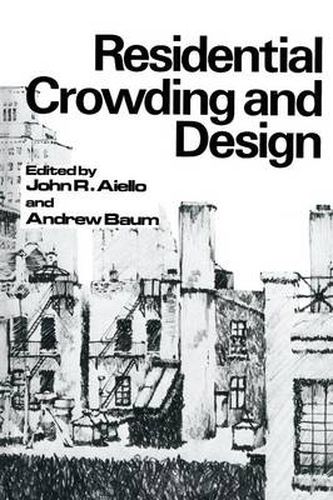Readings Newsletter
Become a Readings Member to make your shopping experience even easier.
Sign in or sign up for free!
You’re not far away from qualifying for FREE standard shipping within Australia
You’ve qualified for FREE standard shipping within Australia
The cart is loading…






This title is printed to order. This book may have been self-published. If so, we cannot guarantee the quality of the content. In the main most books will have gone through the editing process however some may not. We therefore suggest that you be aware of this before ordering this book. If in doubt check either the author or publisher’s details as we are unable to accept any returns unless they are faulty. Please contact us if you have any questions.
The intent of this book is threefold: (1) to summarize recent research concerned with residential crowding, (2) to present some new perspec tives on this important subject, and (3) to consider design implications and recommendations that can be derived from the existing body of research. We have sought to bring together the work of many of the researchers most involved in these areas, and have asked them to go beyond their data-to present new insights into response to residential crowding and to speculate about the meaning of their work for the present and future design of residential environments. We feel that this endeavor has been successful, and that the present volume will help to advance our understanding of these issues. The study of residential density is not new. Studies in this area were conducted by sociologists as early as the 1920s, yielding moderate corre lational relationships between census tract density and various social and physical pathologies. This work, however, has been heavily criticized because it did not adequately consider confounding social structural factors, such as social class and ethnicity. The research that will be presented in the present volume represents a new generation of crowding investigation. All of the work has been conducted during the 1970s, and a range of methodological strategies have been employed in these studies.
$9.00 standard shipping within Australia
FREE standard shipping within Australia for orders over $100.00
Express & International shipping calculated at checkout
This title is printed to order. This book may have been self-published. If so, we cannot guarantee the quality of the content. In the main most books will have gone through the editing process however some may not. We therefore suggest that you be aware of this before ordering this book. If in doubt check either the author or publisher’s details as we are unable to accept any returns unless they are faulty. Please contact us if you have any questions.
The intent of this book is threefold: (1) to summarize recent research concerned with residential crowding, (2) to present some new perspec tives on this important subject, and (3) to consider design implications and recommendations that can be derived from the existing body of research. We have sought to bring together the work of many of the researchers most involved in these areas, and have asked them to go beyond their data-to present new insights into response to residential crowding and to speculate about the meaning of their work for the present and future design of residential environments. We feel that this endeavor has been successful, and that the present volume will help to advance our understanding of these issues. The study of residential density is not new. Studies in this area were conducted by sociologists as early as the 1920s, yielding moderate corre lational relationships between census tract density and various social and physical pathologies. This work, however, has been heavily criticized because it did not adequately consider confounding social structural factors, such as social class and ethnicity. The research that will be presented in the present volume represents a new generation of crowding investigation. All of the work has been conducted during the 1970s, and a range of methodological strategies have been employed in these studies.